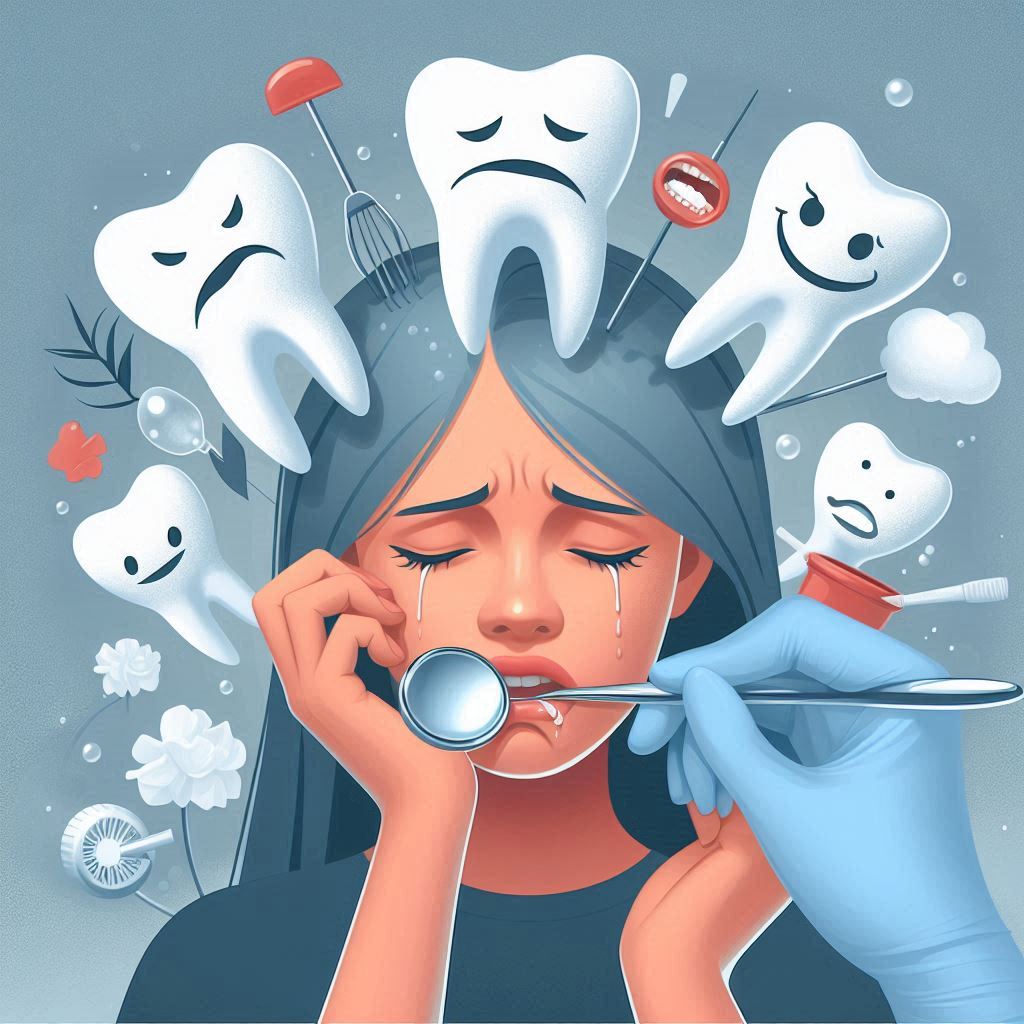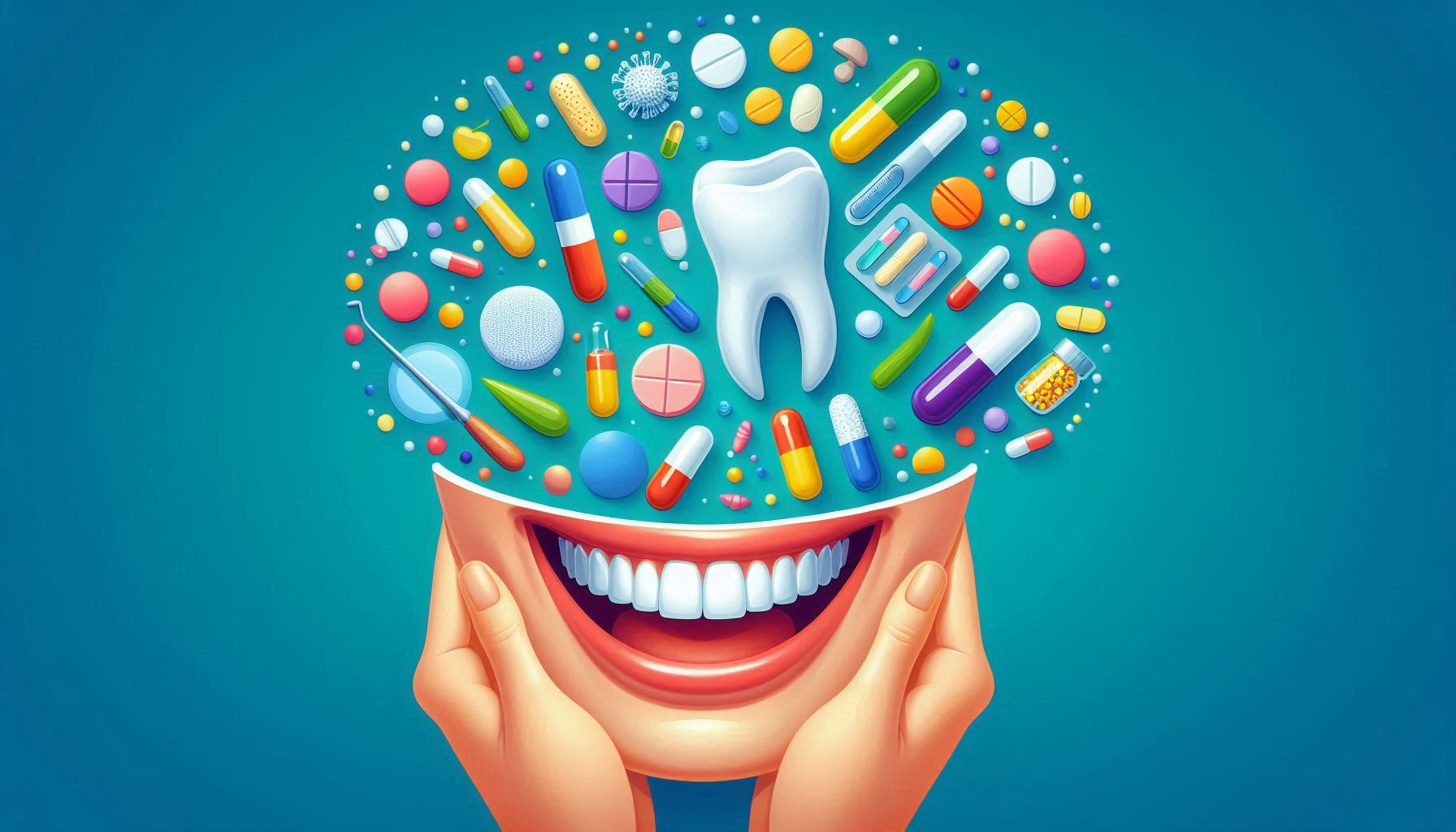Understanding Braces and Their Functionality
Before we dive deep into food choices, it’s important to understand the mechanics behind braces and why certain foods can be damaging.
What Are Braces?
Braces are orthodontic devices made up of several components that work together to move your teeth into proper alignment. These components include:
- Brackets: Small square pieces bonded directly to the surface of your teeth. These serve as the anchor points for the braces system.
- Wires: Metal wires that connect the brackets. These are the primary components that apply the pressure needed to move teeth.
- Elastics/Bands: These rubber bands hold the wires in place and can also be used to adjust the bite.
How Do Braces Work?
Braces apply continuous, gentle pressure on your teeth, which gradually shifts them into their correct position. The pressure applied by the archwires and brackets causes the bone and tissue around your teeth to adapt. Over time, teeth move in the direction intended by your orthodontist, and new bone forms to hold them in place. This process is typically slow, taking months or even years depending on the severity of the misalignment.
Common Components of Braces
Each part of the braces system has its purpose:
- Brackets: These are affixed to the surface of your teeth using a special dental adhesive. They serve as the foundation for the braces system and hold the archwires in place.
- Archwire: This is the metal wire that is threaded through the brackets and creates pressure on the teeth, gradually aligning them.
- Elastic Bands: These rubber bands are used for various purposes, such as correcting bite issues or securing the archwires in place.
Why Food Choices Matter with Braces
Certain food choices are more likely to interfere with the movement of your teeth or cause physical damage to the components of your braces. Understanding the consequences of eating certain foods can help you prevent unnecessary discomfort and setbacks in your treatment.
Impact of Food on Braces
When you eat, food particles often get trapped in the small spaces between your brackets and wires. This can create a breeding ground for bacteria, leading to plaque buildup, bad breath, and a greater likelihood of cavities. Certain foods can also put pressure on your braces, leading to broken brackets or bent wires, which would require an emergency visit to the orthodontist. In short, what you eat can directly impact the effectiveness of your treatment and the speed at which your teeth move into their new positions.
The Risk of Broken Braces
Breaking a bracket, wire, or rubber band is more common than you might think and can be caused by biting down on hard or sticky foods. If a bracket or wire breaks, you may experience discomfort, and it may delay your treatment time as you wait for repairs. The cost of repairs may also add up, especially if food-related damage becomes frequent.
The Importance of Maintaining Oral Hygiene During Treatment
Braces require extra attention to oral hygiene since food particles can easily get trapped in the brackets and wires. Plaque buildup around the brackets and on the wires can lead to cavities, gum disease, and staining of your teeth. If left untreated, it could also cause permanent damage to your enamel. Therefore, keeping your braces clean is essential to preventing unwanted complications and ensuring a smooth orthodontic treatment.
Foods to Avoid: A Detailed Guide
Certain types of food can cause issues with your braces, so it’s important to be cautious about what you eat. In this section, we’ll cover various food categories that should be avoided or consumed in moderation during your orthodontic treatment.
Sticky and Chewy Foods
Sticky and chewy foods are among the most damaging for braces. They can get stuck between your brackets and wires, making it difficult to clean your braces properly. These foods also apply excessive pressure on the brackets, which can cause them to become loose or even break.
- Caramel: One of the worst offenders, caramel is sticky, sugary, and can easily get lodged in your braces. It may even pull on your brackets if you try to remove it with your teeth.
- Taffy: Similar to caramel, taffy can get stuck in the wires and brackets, and chewing it puts excessive pressure on the braces.
- Gummy Candies: These can stick to the brackets, and trying to remove them can dislodge the braces.
- Chewing Gum: Though it may seem harmless, gum can easily get caught in your braces, causing not only discomfort but also difficulty cleaning your braces.
Hard Foods
Hard foods can damage braces by bending wires or popping brackets off the teeth. Additionally, biting down on something hard can apply more pressure than the braces are designed to handle, leading to significant discomfort or damage.
- Nuts: While nuts are packed with protein and healthy fats, they are very hard and can cause damage to your braces. Opt for softer snacks like nut butters instead.
- Hard Candies: Hard candies may seem like a tempting treat, but they can break brackets if bitten too aggressively. If you do choose to consume candy, make sure it’s soft and doesn’t require much chewing.
- Ice: While some people like to chew ice, it’s extremely tough on braces. The pressure from chewing on ice can crack brackets and break wires, causing a lot of pain and requiring repairs.
Crunchy and Crumbly Foods
Though not as damaging as sticky or hard foods, crunchy and crumbly foods can break into small pieces that get lodged in the braces. These small particles can also get stuck in between your teeth, making it harder to clean the braces and contributing to plaque buildup.
- Chips: While they may not be as hard as nuts or candy, chips are very crunchy and can break into smaller pieces that can get stuck in your braces.
- Popcorn: Popcorn kernels, especially unpopped ones, are extremely hard and can cause brackets or wires to break. Additionally, popped kernels can get stuck between the brackets, requiring extra time to clean them out.
- Crackers: Like chips, crackers break into small pieces that can get stuck in your braces. They are also difficult to clean out, making them a less than ideal choice for those with braces.
Foods That Can Stain Your Braces
Certain foods and drinks can stain the clear or ceramic parts of your braces, which may lead to discoloration of your brackets or elastics. This is particularly important for those who have clear braces or white elastics.
- Coffee and Tea: Both coffee and tea are known for staining teeth, and the same applies to your braces. They can discolor the elastic bands and make your braces look yellowish over time.
- Wine: Red wine is another drink that can leave dark stains on your braces. Even white wine can cause staining due to its acidic nature.
- Berries: While healthy, berries such as blueberries, blackberries, and strawberries are highly pigmented and can stain the brackets and elastics.
- Tomato Sauce: Spaghetti sauce, pizza sauce, and other tomato-based sauces can leave stains on your braces, especially the elastics.
Sugary Foods
Sugary foods are not only bad for your overall health but also for the health of your braces. When sugar gets trapped in your braces, it provides food for bacteria, which can lead to plaque buildup, cavities, and gum disease.
- Candy and Sweets: Sugary treats like chocolate bars, hard candies, and sugary gummy candies can stick to your braces and cause cavities if left on the teeth.
- Sugary Beverages: Soda, sweetened fruit juices, and sugary teas are high in sugar and can lead to plaque buildup around your braces. Even sugar-free sodas can be harmful due to their acidity.
Alternatives: What to Eat While Wearing Braces
While braces may restrict some food choices, there are plenty of delicious alternatives that are safe and beneficial for your teeth. Here are some braces-friendly foods that are both nutritious and easy to enjoy:
Soft Foods for Braces Wearers
- Mashed Potatoes: Soft, creamy mashed potatoes are an excellent option. They’re easy to eat and can be seasoned in a variety of ways to keep meals interesting.
- Smoothies: Packed with vitamins and minerals, smoothies are a great choice for braces wearers. Just be sure to avoid seeds or chunks that could get stuck in the braces.
- Soups: Pureed soups or broths are easy to consume and can provide warmth and comfort while being gentle on your braces.
Nutritious Options
- Yogurt: Smooth and full of probiotics, yogurt is a great source of protein and calcium. It’s also easy to eat and doesn’t require much chewing.
- Soft fruits: Bananas, applesauce, and seedless watermelon are soft enough for braces wearers, providing essential vitamins without the risk of damaging the braces.
How to Protect Your Braces During Meals
Braces require extra care, especially when it comes to eating. Here are some tips to help protect your braces during meals:
- Cut Food into Smaller Pieces: Cutting food into bite-sized pieces reduces the strain on your braces and makes it easier to eat without putting excessive pressure on the brackets.
- Use Orthodontic Wax: If you’re experiencing discomfort from the wires or brackets, orthodontic wax can help soothe sore spots on your gums. This is especially helpful if you’ve just had an adjustment or if a bracket is irritating your mouth.
- Brush After Eating: Make sure to brush your teeth after every meal to remove food particles and prevent plaque buildup. This helps keep your braces clean and reduces the risk of cavities.
Handling Pain and Discomfort from Eating
It’s not uncommon to experience some discomfort, especially right after getting braces or after an adjustment. Here are some ways to manage any pain:
- Opt for Soft Foods: When your mouth is sore, soft foods like mashed potatoes, yogurt, and soup can be easier to eat without causing more discomfort.
- Saltwater Rinses: A saltwater rinse can help alleviate discomfort by reducing inflammation and soothing any irritation from the braces.
When to Visit Your Orthodontist
Regular checkups with your orthodontist are essential to ensure that your braces are progressing as expected. If you experience any issues with your braces, such as broken wires or loose brackets, contact your orthodontist immediately to schedule repairs.
Conclusion
Braces are a significant investment in your oral health and smile, and protecting them by avoiding certain foods is key to a smooth treatment process. By understanding what foods can harm your braces and making mindful dietary choices, you can help ensure that your treatment progresses smoothly. With a little care and some helpful tips, maintaining your braces won’t be too difficult, and you’ll be rewarded with a beautiful, healthy smile in no time.
SOURCES
American Association of Orthodontists. 2019. Braces and your diet: Foods to avoid. American Association of Orthodontists.
American Dental Association. 2021. Braces care: What to eat and avoid with braces. American Dental Association.
Britten, D. L., Cunningham, R. S., & Smith, J. T. 2017. The impact of diet on orthodontic treatment: A comprehensive review. Journal of Clinical Orthodontics, 51(5), 21-25.
Harris, D. L., Roth, M. T., & Wilkerson, M. T. 2020. The role of diet in orthodontic treatment and patient comfort: Guidelines for patients with braces. The Journal of Contemporary Orthodontics, 8(4), 45-50.
Kelley, J. R., Bauer, S. D., & Lindh, S. O. 2018. Understanding food’s effect on orthodontic appliances: A guide to braces and food restrictions. The Journal of Dental Research, 66(3), 101-105.
Kumar, M. S., Singh, V. A., & Patel, S. M. 2020. Orthodontic treatment and dietary management: Avoiding food-related setbacks in braces wearers. Orthodontic Practice Today, 15(6), 20-23.
Lynch, M. A., Healy, C. B., & McCarty, B. R. 2019. Foods that can damage braces and prolong treatment time: A survey of common dietary risks in orthodontics. The American Journal of Orthodontics, 55(2), 34-38.
Myers, S. R., Jackson, L. M., & Zhang, D. L. 2022. Dietary habits and orthodontic appliance maintenance: What foods to avoid and why it matters. Journal of Clinical Orthodontic Care, 12(1), 40-44.
Parker, J. P., & Williams, T. L. 2017. Oral hygiene and orthodontics: The importance of a proper diet and daily care routine for braces. Dental Hygiene Journal, 31(3), 12-15.
Richmond, S. R., & Almeida, A. L. 2016. Braces and diet: Minimizing discomfort and ensuring treatment success. The British Journal of Orthodontics, 53(2), 19-22.
Sullivan, A. C., & Taylor, R. P. 2021. Protecting your braces: A patient’s guide to orthodontic care and food considerations. Clinical Orthodontic Research, 9(1), 5-8.
Thomas, A. D., Young, R. J., & Davis, C. E. 2020. Eating with braces: How to ensure proper care and avoid food-related issues. Journal of Dental Health and Orthodontics, 44(4), 35-38.
HISTORY
Current Version
February 15, 2025
Written By:
SUMMIYAH MAHMOOD




